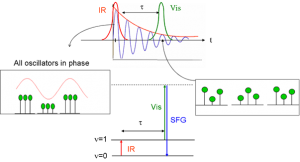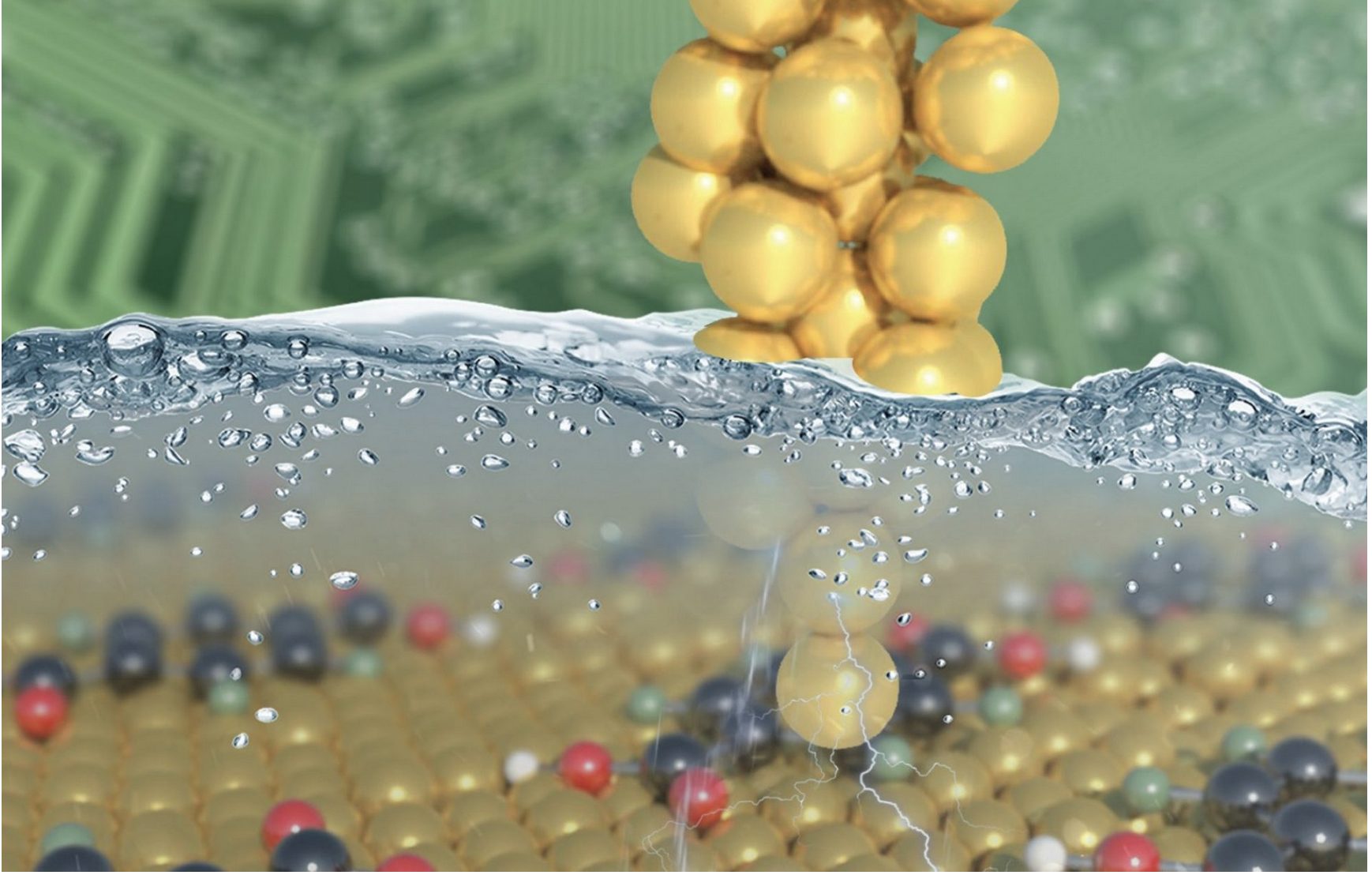Second-order nonlinear optical processes such as Second Harmonic Generation and Sum-Frequency Generation are excellent optical techniques for probing the interface phenomena due to their interface specificity and submonolayer sensitivity with non-invasive and in-situ advantages.
Second Harmonic Generation (SHG):
SHG is a second-order nonlinear optical process in which two visible (ωvis) photons combine at the surface or interface and generate a third photon (ωSHG) whose frequency is the sum of the two frequencies: ωSHG= ωvis+ ωvis.
Sum-Frequency Generation (SFG):
SFG is a second-order nonlinear optical process in which visible (ωvis) and IR (ωIR) photons combine at the surface or interface and generate a third photon (ωSFG) whose frequency is the sum of the two frequencies: ωSFG = ωIR + ωvis.
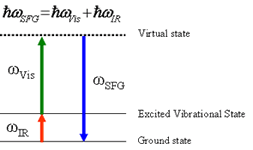
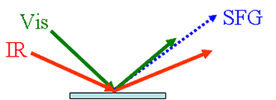
Surface Vibrational Spectroscopy:
By tuning the IR frequency to match the vibrational mode of the molecule of interest, SFG provides the surface vibrational spectra of surface or interface species.

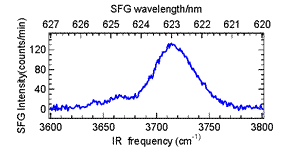
Surface vibrational dynamics (population dynamics):
IR pump-SFG probe is used to probe the rate of energy transfer and population relaxation of interfacial species. We have shown that the vibrational dynamics of interfacial water at a silica surface is different from bulk water and depends on the charged surface.
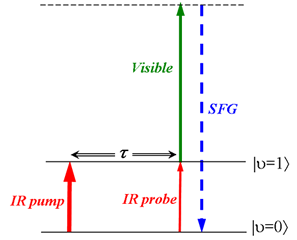
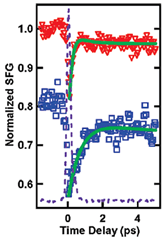
Surface vibrational dynamics (vibrational dephasing dynamics):
SFG-FID is used to probe the dephasing of the vibrational modes of interfacial species.
